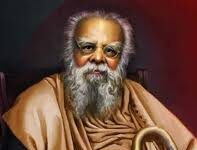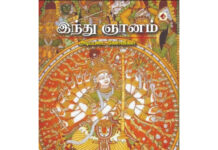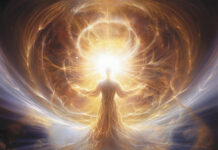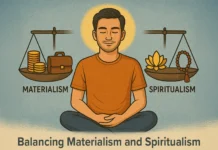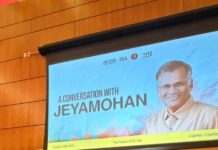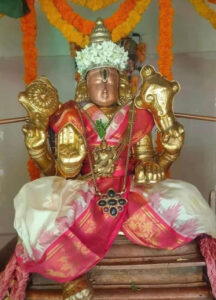
Jeyamohan
I have a question. I read a book about Narayana Guru (published by Kizhakku Pathipagam; it is useful only as a brief introduction to him). In that book, the author reduces Narayana Guru to the status of God (that he worked a few miracles and so on). There are many like him…
According to me, a guru is someone who must, no doubt, be respected. Someone who is definitely superior to me. For instance, it was only through your website that I rediscovered a particular aesthetic sensibility in Tamil literature. In that regard, I respect you as a guru. At the same time, there’s a part of me that feels that you’re human, too, and therefore, a storehouse of likes and dislikes.
In the same way, can we not stop at the fact that Narayana Guru, through SNDP, uplifted a certain class of people? What is your view on this? Or, have you spoken about this before?
Affectionately,
Ganesh, Chennai
P.S. By the way, here’s another interesting thing. Recently, my wife and I visited the Puttaparthi Baba temple in Chennai one evening, for a gathering known as a ‘joint prayer’. My wife said: If Baba is truly someone who possesses extraordinary powers, he will contact me in some form. In such matters, both of us have an unexceptionally ambivalent mindset. As if, god will punish us if we were to utter something blasphemous… 🙂 So, we told ourselves, let’s attended the event and see what comes off it. It so happened that an announcement made after we had finished our prayers that day led my wife to donate O+ blood to an ailing patient. Even if these kind of incidents are mere coincidence, it’s impossible not to wonder about them…
—
Dear Ganesh,
To project men as god-like is typical of the Indian psyche. A triad of values forms the basis for this: (1) worship of the elderly; (2) worship of the dead; and (3) worship of the guru. Who shares domestic life, by household virtues graced / Shall, mid the Gods, in heaven who dwell, be placed*. It is this belief, steeped in tradition, that paves the way for the aforementioned psyche.
When people grow old, we place them on a high pedestal and start worshipping them. You would have noticed that, in our society, a large majority are respected and worshipped only because they are old. It is also our habit to constantly nudge our parents towards the rank of gods.
The phenomenon of the dead being deified has existed right from the age of tribal civilisations. When a person dies, they becomes pure spirit. They become one with and a part of the great cosmic spirit. Then, our ancient tradition believes, they too become God. That is why we continue to make gods of the dead. Those who die a brave death, those who sacrifice themselves become gods. Women who die during childbirth become gods. If the society wrongs someone, its guilt makes a god out of the victim too.
Finally, the guru becomes a god. We begin to worship our gurus even while they are alive. After their death, we transform them into gods. In our tradition, we perform burials, build samadhis, erect temples, and conduct guru-poojas for anyone who passes away after having donned the saffron.
These three values are so deeply rooted in the Hindu, Jain and Buddhist religions that they have come to be their very bedrock. This foundational mindset is a product of many thousands of years of conditioning. It has helped bequeath our society’s spiritual prowess, its knowledge aggregate, and its art forms to the next generation without any distortion. It has proven to be indispensable in ensuring that nothing is forgotten while being handed down to the next generation, no matter how hostile the environment might be.
That is why I’m not inclined to dismiss it now as mere superstition or a silly outpouring of emotion. So far as I’m concerned, I am someone who feels the deepest devotion towards those who came to be my gurus. It shows me, at once, my ordinariness as well as my worthiness.
That said, a modern thinker should have a discerning nature and an analytical temperament. To do so, does not amount to insulting or demeaning our pioneers and gurus. We scrutinise them in order to absorb the very best from them. It is not only their success that is important to us but their failures too. Not only their clarity but their confusions too. Not only their strengths, but their weaknesses too. All of them are lessons for us to learn from.
Since the traditional mindset is deep-rooted in our society, we are unable to analyse our pioneers and trailblazers in this manner. It hurts the sentiments of the devotees and worshippers. They think of it as an insult and cry foul. I’ve been through such experiences time and again, for, the one whom I regard as teacher is also the one I study most minutely.
Recently, an elderly man accused me of disgracing Gandhi; he grabbed hold of my hands, seethed with anger and cursed me. How dare I write about Gandhi’s sexual experiments, he demanded. There is a large group that still holds the belief that that I brought shame upon Sundara Ramaswamy when I wrote that he liked the actress Sarita. To this day, I receive letters abusing me for having written about Nehru and M.S. Subbalakshmi.
Myth-creation is a never-ending activity in our intellectual milieu. We are compelled to forget every negative trait of the deceased. We go on reiterating and exaggerating our ardent beliefs about them until we reach a stage where we forget who they really are. We have a particular story-form for a myth, and we force-fit everyone into it. It is the same story for all. Be it Shirdi Sai Baba or the Seer of Kanchi or J. Krishnamurthi or M.G.R.
This is precisely what happened with Narayana Guru too. In fact, it had already begun when Narayana Guru was alive. He vehemently rejected such efforts. He condemned them in writing, too. And so, they waited until he attained samadhi. The very next day, they began erecting statues and making up stories. The very same stories, without even an iota of imagination. This was particularly true of those who tried to form a political unit of the Ezhava caste by centring it on their deification of him.
However, genuine disciples of his, like Nataraja Guru, revolted against this trend. They distanced themselves from such activities and presented Narayana Guru in his true form. In globally acclaimed books such as Nataraja Guru’s The World of Guru, you will not find such myths. Instead, you’ll see the many facets of Narayana Guru: that of a pure Advaitin, a social reformer, a yogi, as well as his transformation from one to the other. You can also see, in quite some detail, the extreme unease of those around him who could not understand him, and how they tried to use him to their advantage instead.
Nataraja Guru has written all about the yogi that Narayana Guru matured into—about his mental upheavals and unrest, as well as his disillusionment with fellow humans. There were two instances, in his last days, when Narayana Guru forsook everything and came to Maruthuvazhmalai, where he had initially resided. Others pacified him and took him back. The same story is told of Ramanar too.
Ordinary people are only in need of god-forms, not gurus. They only desire to worship, that too for worldly gains, not to seek or to follow. Therefore, there is a world of difference between their perspective and the perspective of a seeker. One can only say ‘excuse me’, gently nudge them aside and move on—there is no other way. One must move on without paying any heed to their outrage or their grievances.
About your footnote. In general, I don’t allow this mindset of finding meaning in coincidences to grow in myself. The universe that surrounds us is a colossal web, or else, it is wholly serendipitous. If we think of it as a web, it is definitely not so tiny that our mind can grasp it. Therefore, to attempt to connect coincidences is not only futile, but a type of conceit too. It will come in the way of true knowledge and drag us down to the simple-minded practice of making ourselves the centre of all thought.
That may be necessary for those who want to live solely on the reliance of faith. But it does not behove a practitioner of knowledge.
Je.
(Translated from the original Tamil essay, Puraanamayamaadhal, by Jeyamohan https://www.jeyamohan.in/12804/)
Republished on September 22, 2018. First published Feb 25, 2011
(*G.U.Pope’s translation of the Thirukkural couplet no. 50)
(Translated by Priyamvada Ramkumar)
